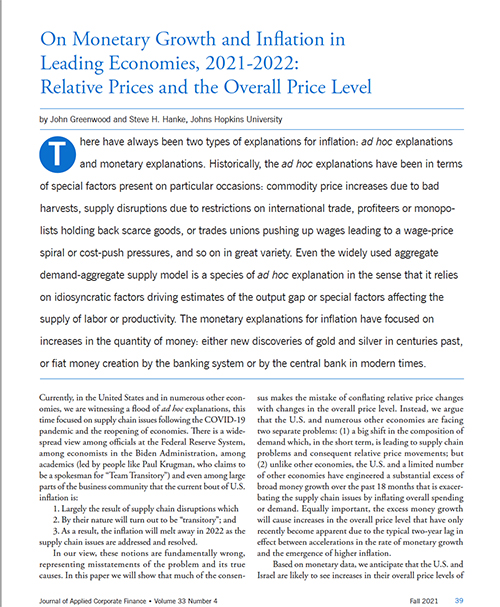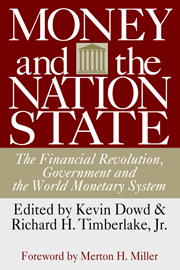On Monetary Growth and Inflation in Leading Economies, 2021-2022
Relative Prices and the Overall Price Level

Also published in Journal of Applied Corporate Finance Tue. September 21, 2021
Steve H. Hanke is a Senior Fellow at the Independent Institute and Professor of Applied Economics and Founder and Co-Director of the Institute for Applied Economics, Global Health, and the Study of Business Enterprise at Johns Hopkins University.
John Greenwood, OBE is Chief Economist of Invesco, Ltd.
American HistoryBanking and FinanceBusiness and EntrepreneurshipEconomic History and DevelopmentEconomic PolicyEconomistsEconomyFederal Reserve and Central BankingFree Market EconomicsGovernment and PoliticsLaw and LibertyPhilosophy and ReligionTaxes
Comments
Before posting, please read our Comment Policy.











